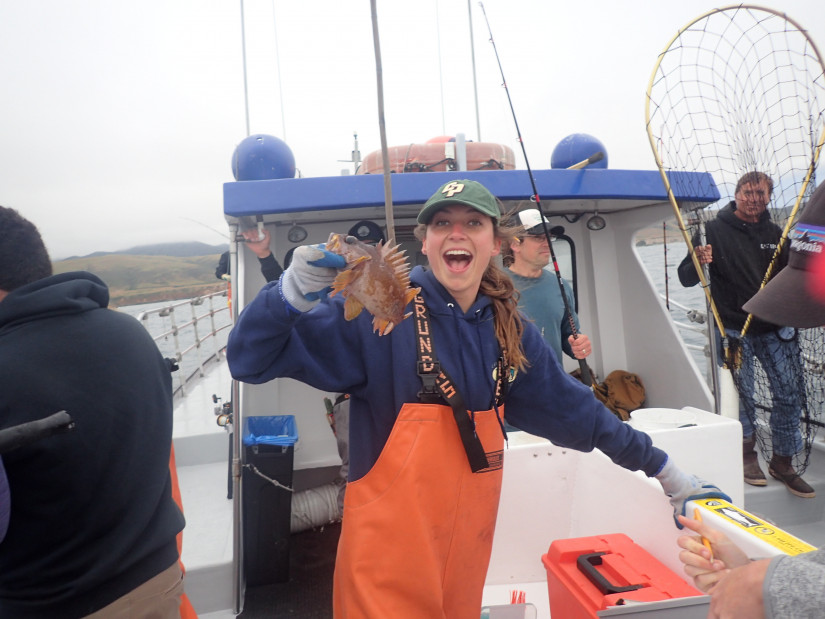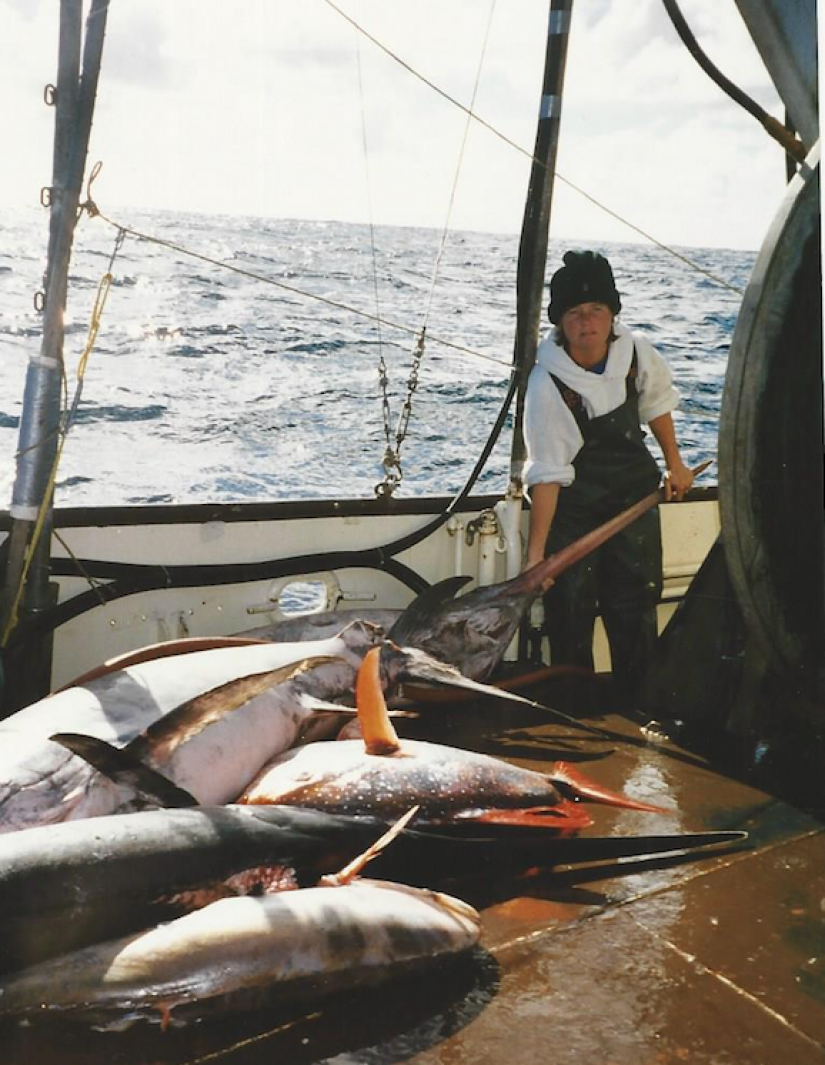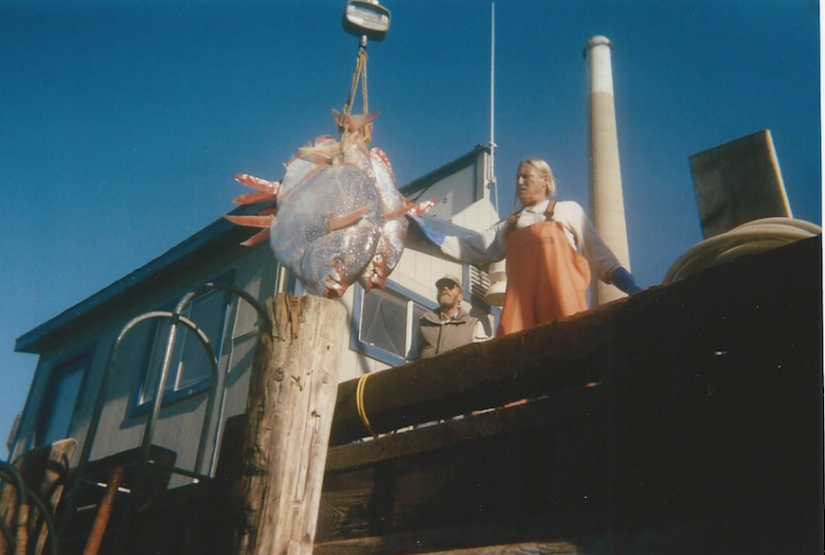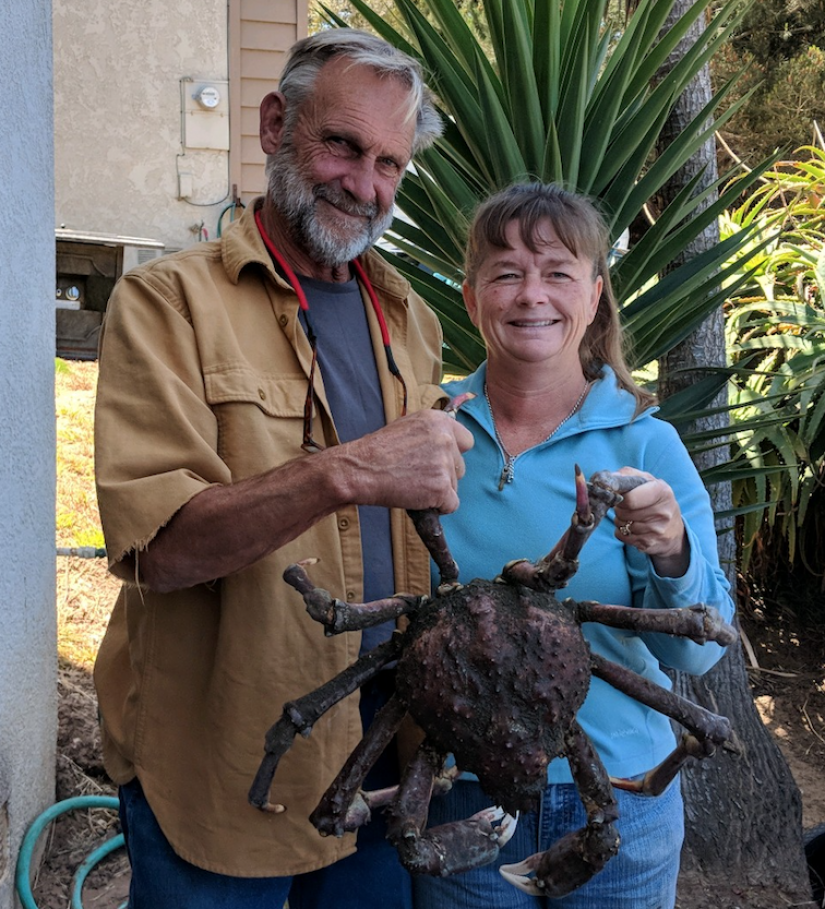Fisheries scientists and managers inform and make decisions about fisheries across an array of topics. Their work may include stock assessments, models of population trends, and management decisions including allowable gears, fishing seasons, size limits, and the total allowable catch or number of people allowed to fish. Most fisheries scientists and managers have degrees in biology. And yet, many biology students have no interaction with fishermen as part of their training.
Over the last three years, we have partnered in an upper division fisheries science course at the California Polytechnic State University (Cal Poly) to bring together scientific knowledge on fisheries and management with a real-world perspective and knowledge from local fishermen.
The students started the quarter with a visit to the local fishing village of Morro Bay where they met the Harbor Master, learned about the history of the town as a fishing community, visited a local fish market, and went aboard O’Brien’s fishing boat to start learning about what it is like to be a fisherman. The students learned about what it means to be at sea for days on end as well as a fisherman’s perspective on the importance of marine conservation, but also of ensuring sustainable livelihoods for local fishermen.
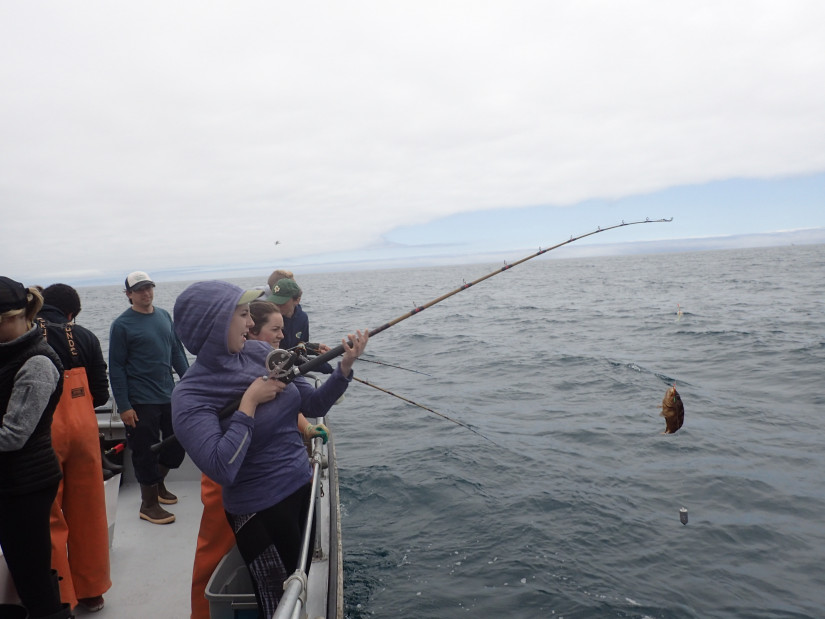
In the classroom, students learned about trends in global fisheries, the ecology behind fisheries management, data collection techniques, and how fisheries models work. Students then made group presentations on a California fishery (sea urchin, salmon, Dungeness crab, or nearshore groundfish) that included history of the fishery, management structure and key agencies, permitting processes, and status of the stocks. O’Brien attended the presentations and helped students fill in gaps in their knowledge. One of the key take-home messages was that it is relatively difficult to understand the fisheries regulations without guidance. O’Brien’s insight was especially important in understanding the historical trends in management and regulation of the fisheries. Further, students learned that many fisheries now cannot be entered at will – permits need to be bought from a fisherman selling their permit. The students started thinking about fisheries from both a biological and social perspective.
We concluded the class by going out to sea to sample fish inside and outside of a marine protected area through a Cal Poly led program called the California Collaborative Fisheries Research Program. This program, led by Cal Poly’s Dean Wendt and former Sea Grant Extension specialist Rick Starr, engages recreational fishermen in scientific assessments of marine protected areas statewide. It therefore provides a perfect model for how fishermen can be engaged in the scientific process to the benefit of all involved. For many students, this was their first time handling a live fish and they learned how to identify, measure, tag, and release fish.

Julie Ridgeway, a recent graduate student in the course commented:
"Having the chance to bring the real world and classroom together while learning about fisheries management allows students like myself to fully grasp the problems, success stories and consequences of the decisions we may make in the future. It was a privilege to be able to work and discuss the concepts we have learned in class with some of our local fishermen to gain insight that cannot be attained or taught in an academic setting. Meeting fishermen in a variety of our local fisheries allows roots to be established early on between those who are just about to enter a fisheries career and those who have acquired a wealth of knowledge over the years, further breaching the gap that can occur between academia and industry."
Biology students often miss out on the wealth of information that fishers possess. Fishermen work for years at sea in constant observation of the marine system. This vast experience and knowledge is not something that cannot be gained from a book. Fishermen observe ocean nuances, such as water colors, temperatures, conditions, currents, bird life, fish growth patterns, and in some cases diseases and other trends that they can compare with years of past experience. For a fisherman to be successful in his or her work, he/she must learn as much about each species as they possibly can, and in some cases make individual species a life-long study. This knowledge is often an untapped resource.
Increasingly, there is a focus in marine management realms on participatory research and co-management. Research that involves the fishing community helps build trust for scientific findings and results in a shared learning process and often shared decision making. By bringing fishermen into university classrooms, we set the stage for collaborative research as a career approach.
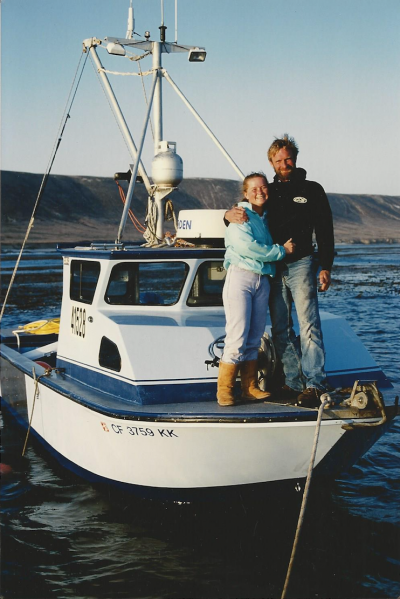
Advice on working with fishermen
For students and professionals who are ready to reach out to fishing communities, fishermen offer some basic advice. Before reaching out, learn about who the leaders are in the local area in the fishery you are interested in. Leaders often will be more willing to become engaged in your work. Remember that fishermen are busy people, and time lost on the sea means lost income. Therefore, you may need to take time to explain the importance of your work to the fishery to generate interest in the project. Ideally, you should also work to include the fishing community from the very beginning of a project (at the grant writing phase) so that you can incorporate a budget that allows fishermen to participate. This often means using fishing boats as a research platform and paying the captain and crew for their time.
By engaging early in your career with fishermen, you will enhance your field experience and gain friendships that will aid you in future projects, reduce the time spent to get to conclusions, and help the fishing community, which is a winning scenario for everyone.
O’Leary is a California Sea Grant Extension Specialist based at California Polytechnic State University who teaches an upper division course in Fisheries Science. O’Brien is a fisherman based in Morro Bay with current or former experience in the tuna, salmon, swordfish, sea urchin, and abalone fisheries.
